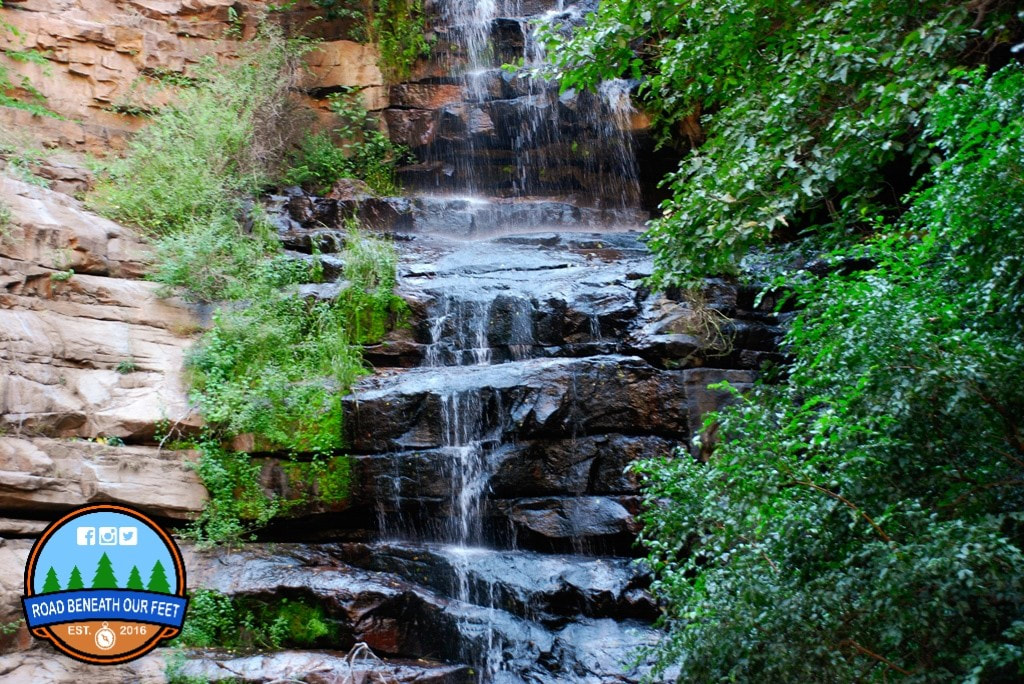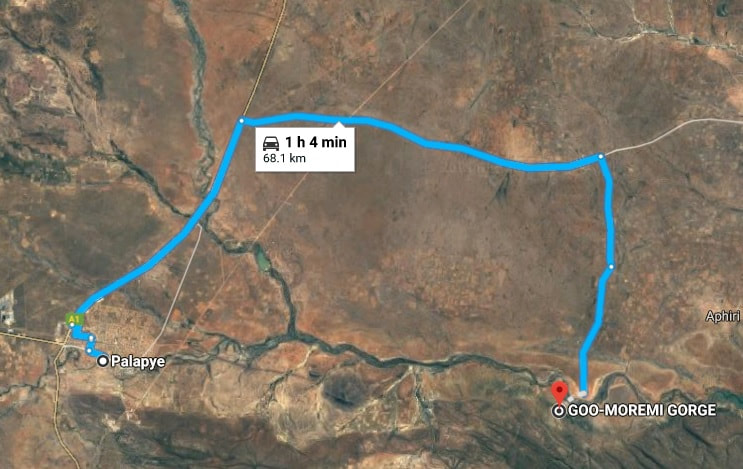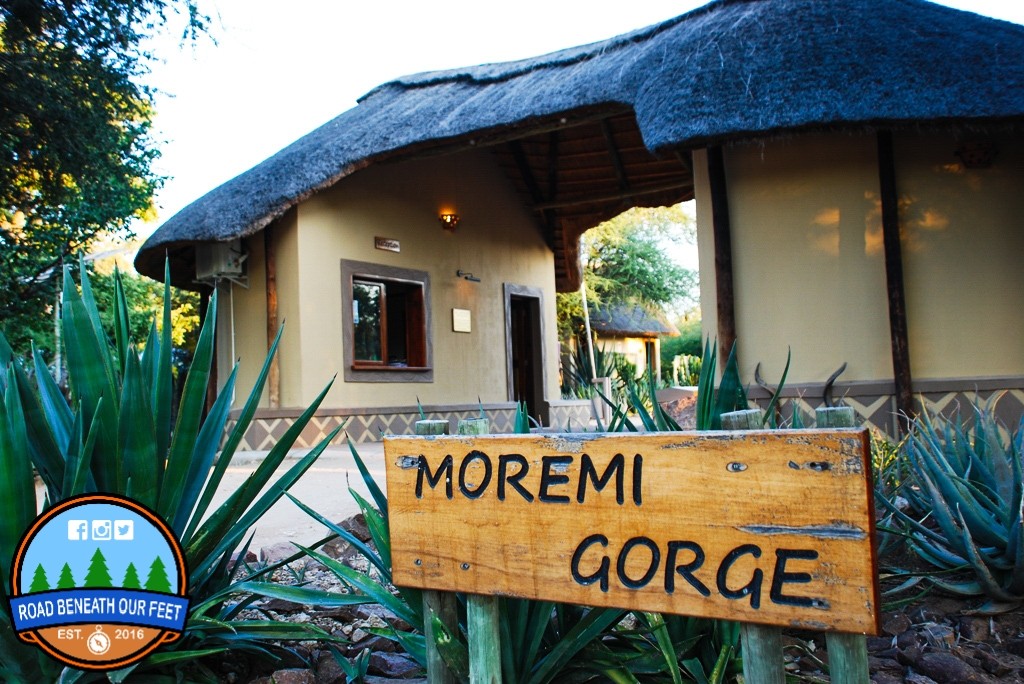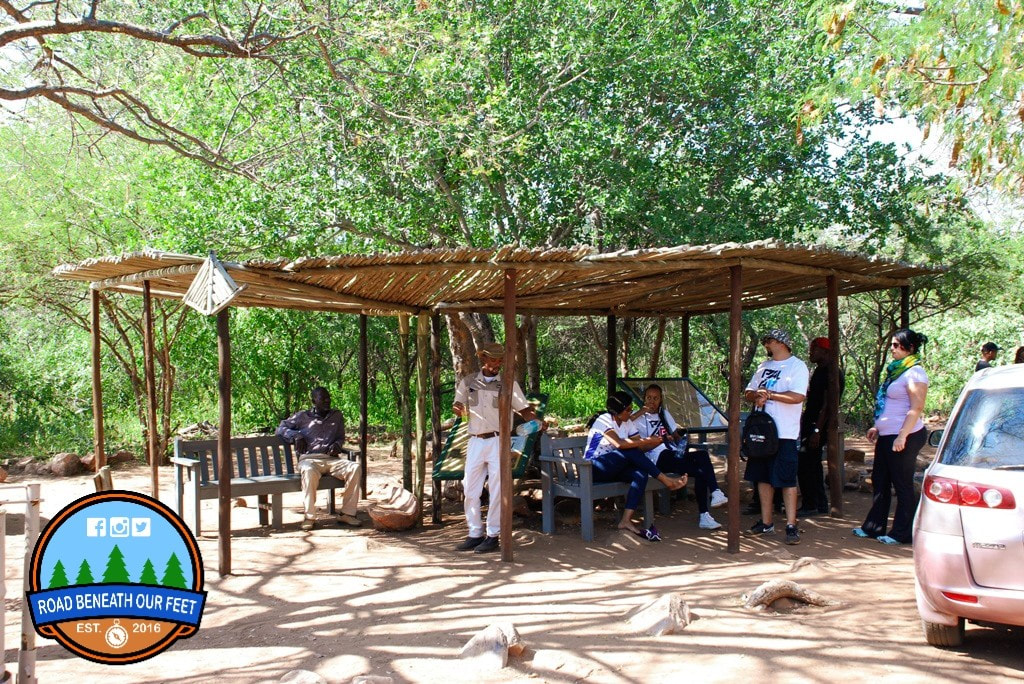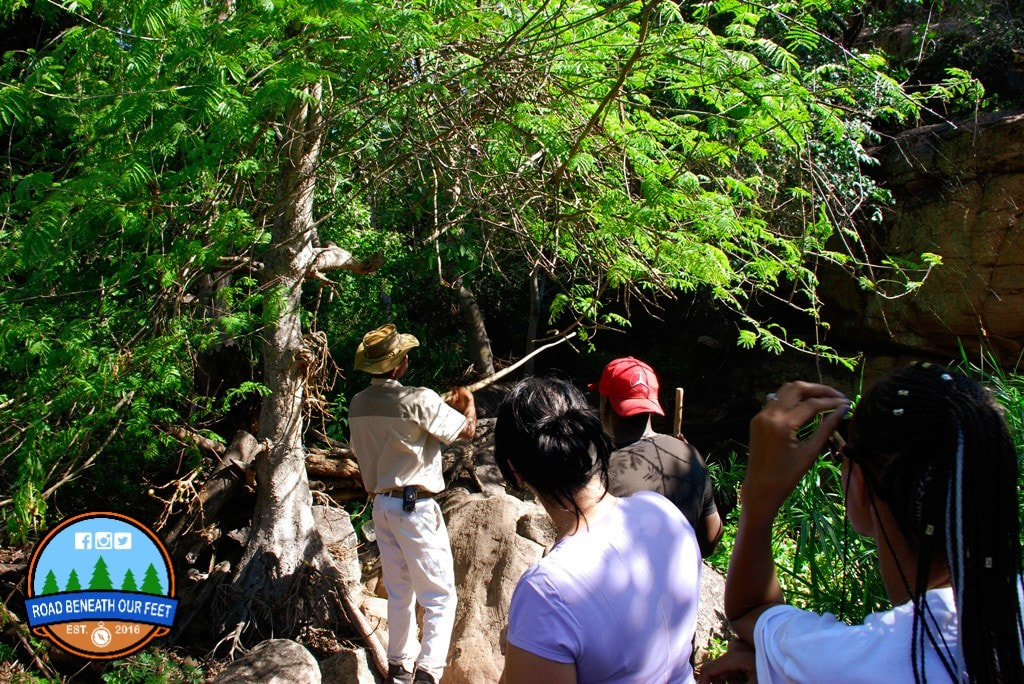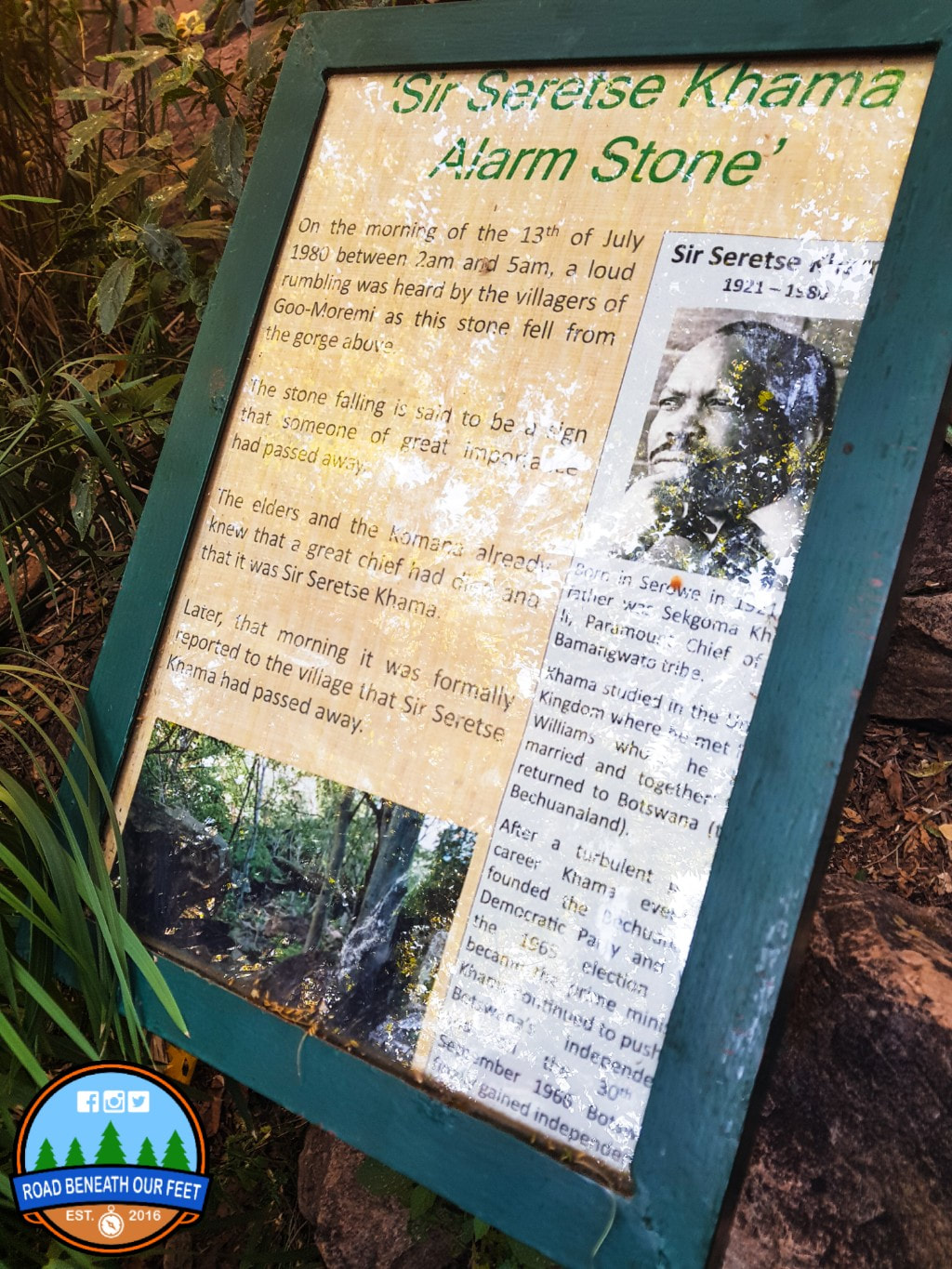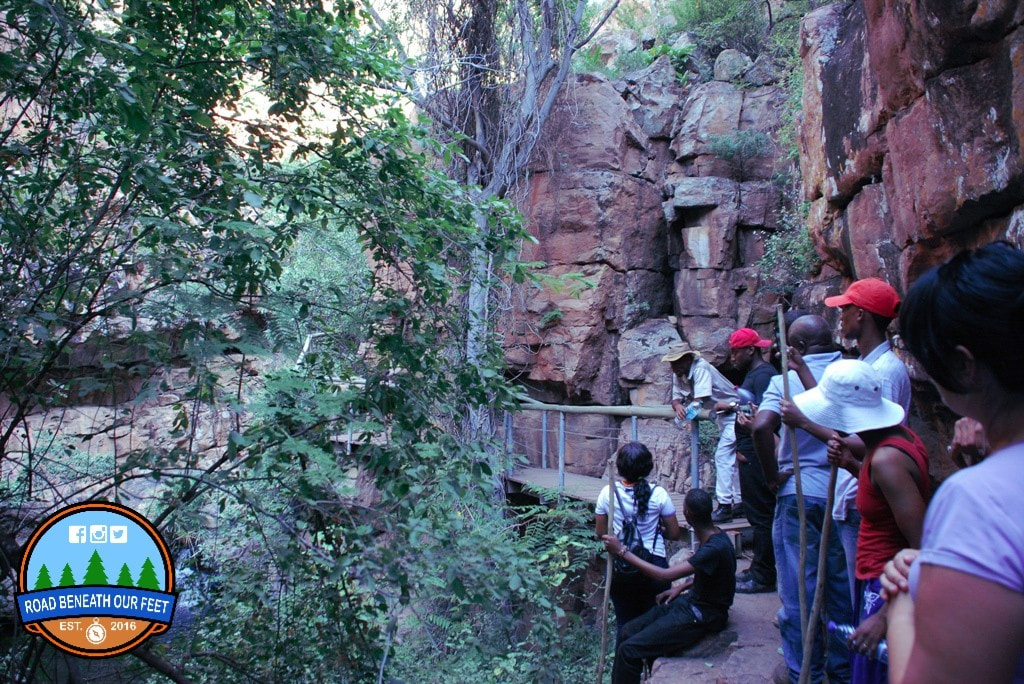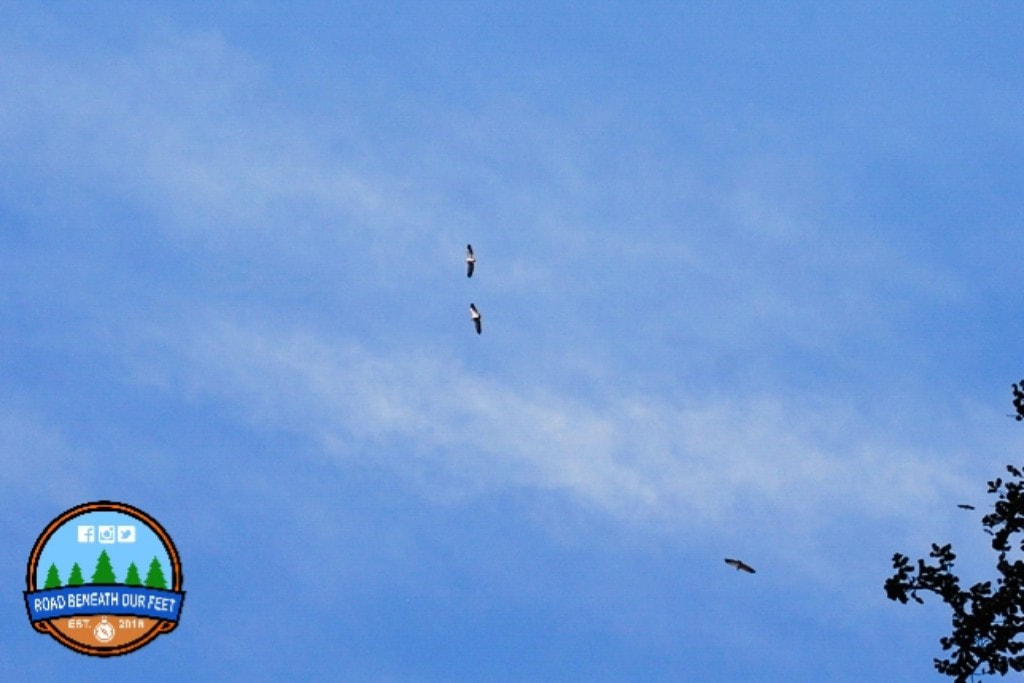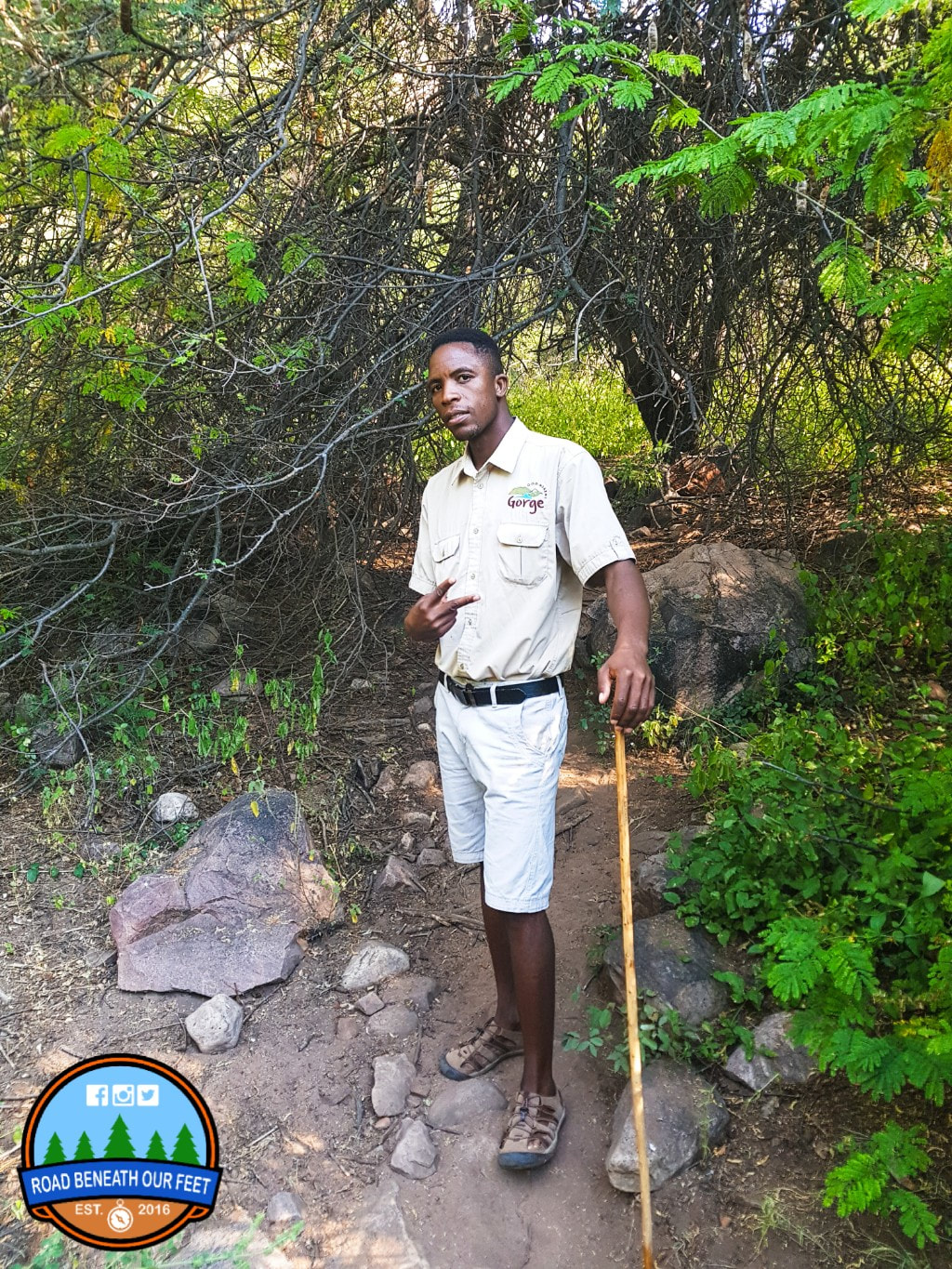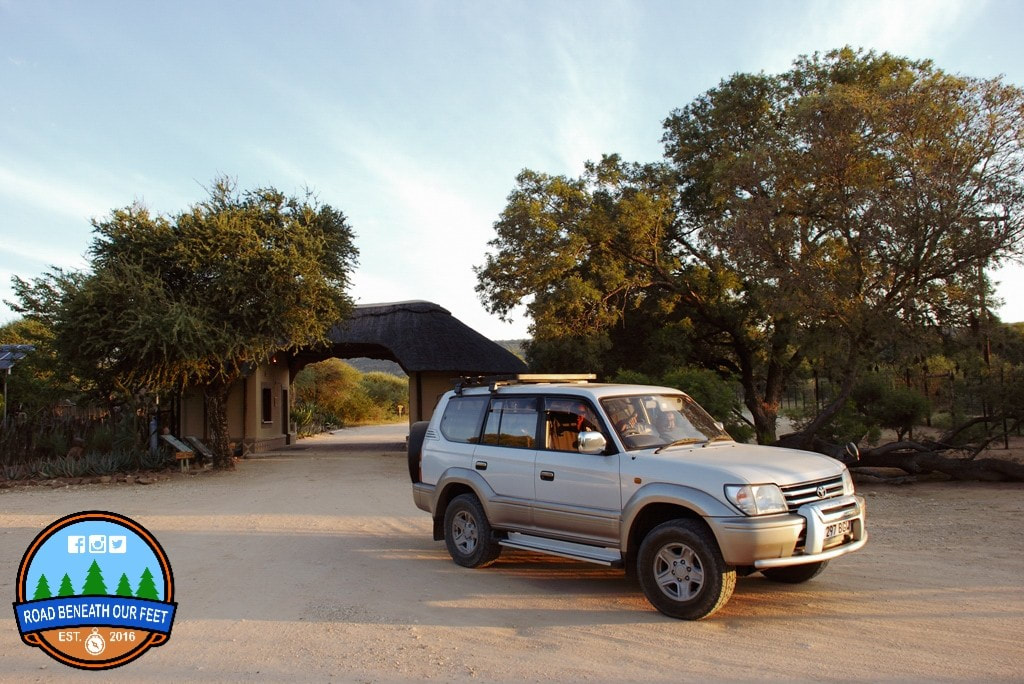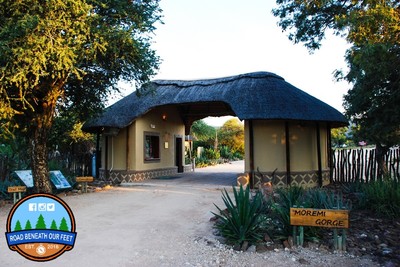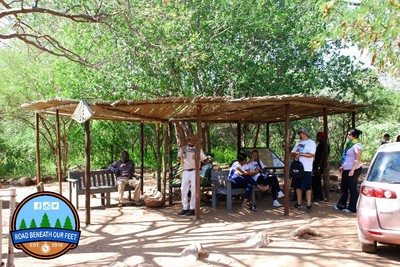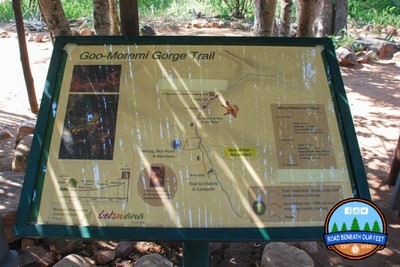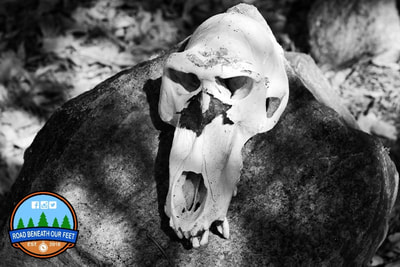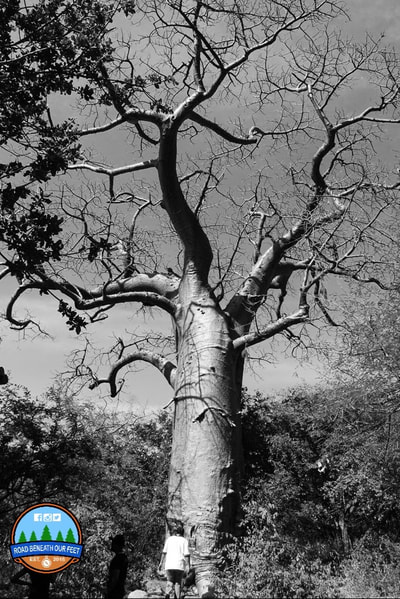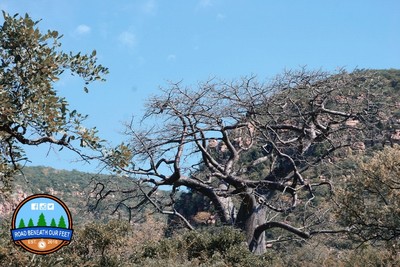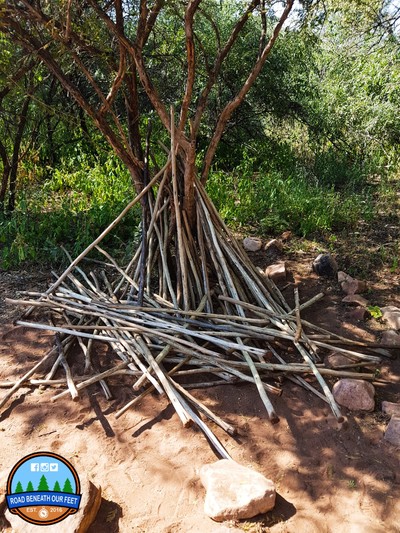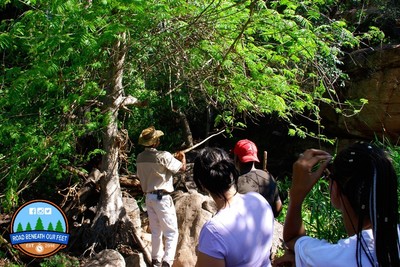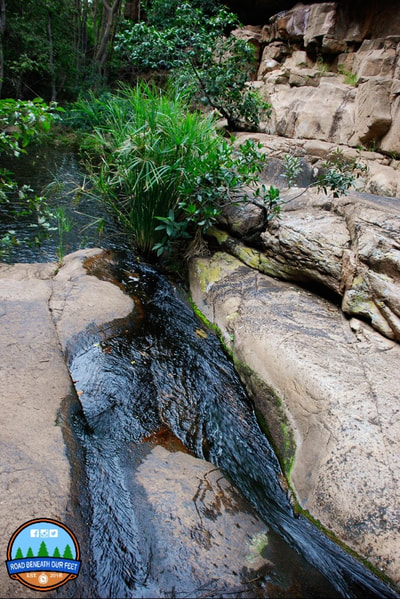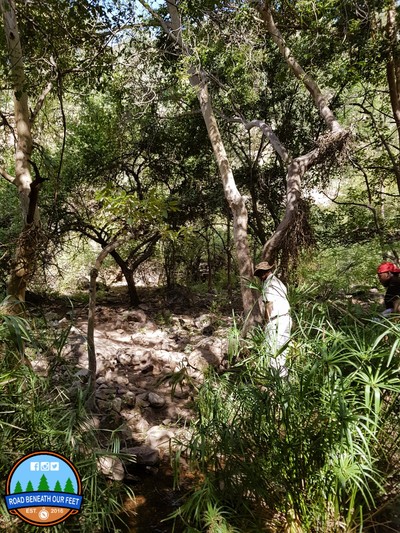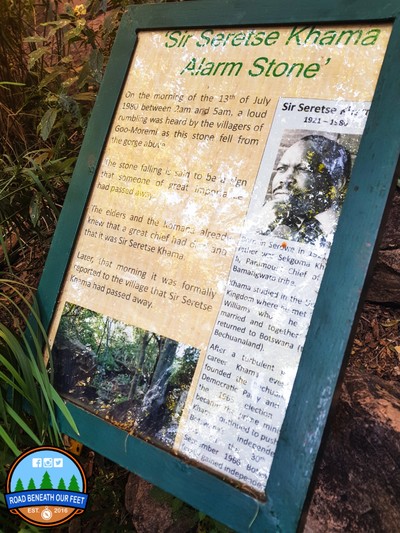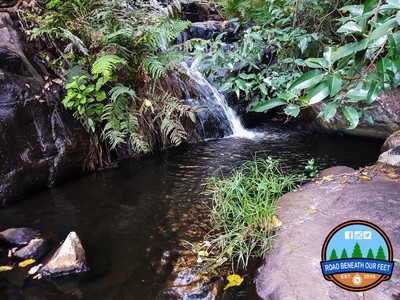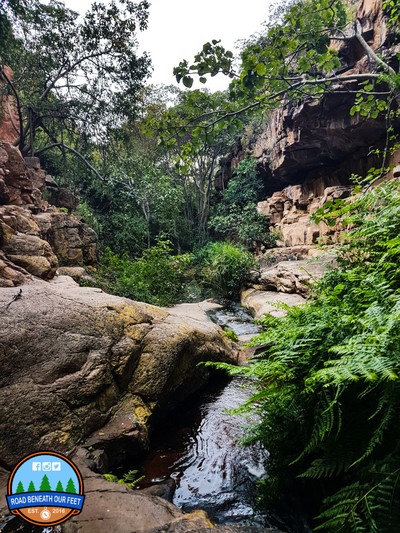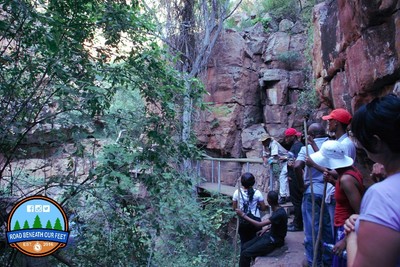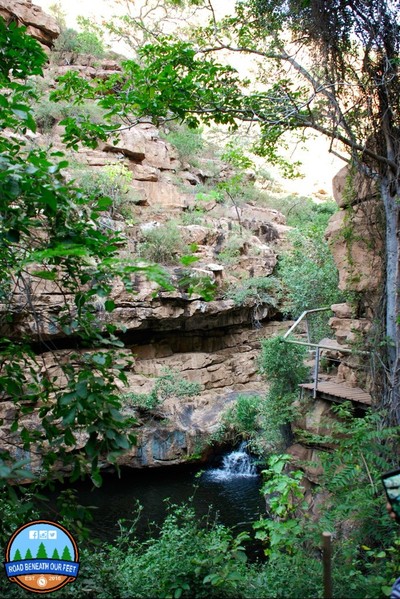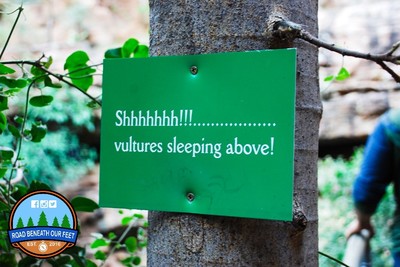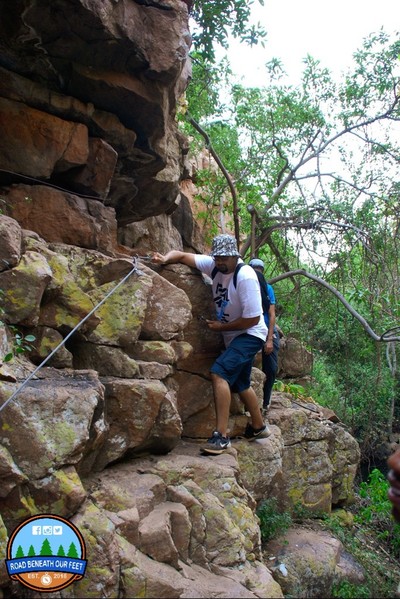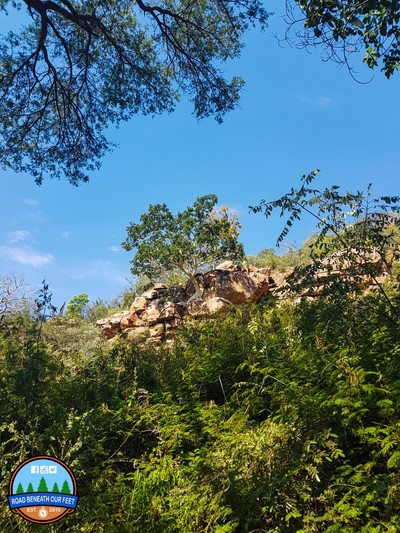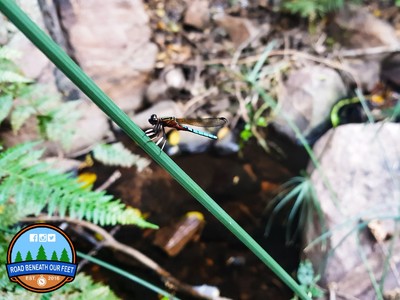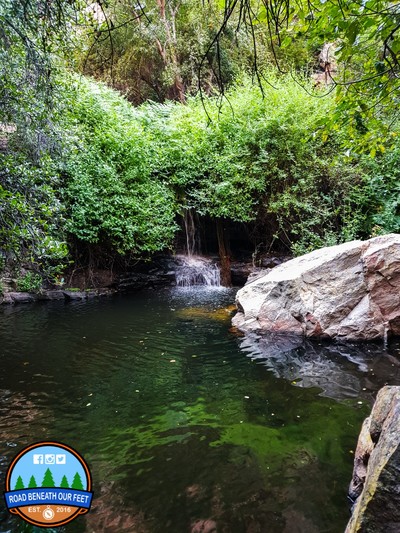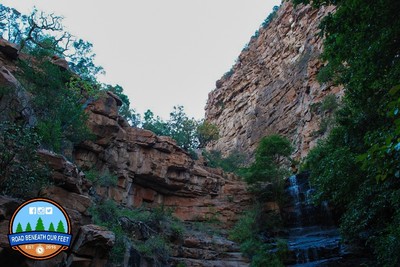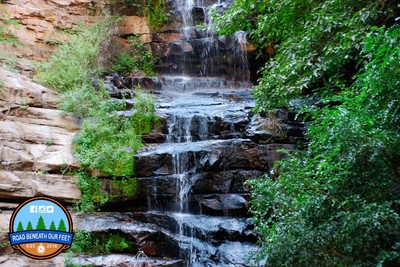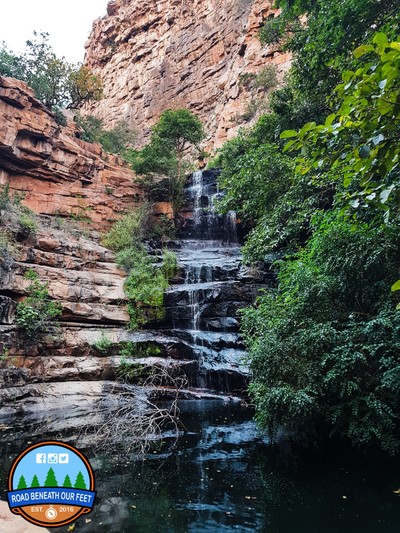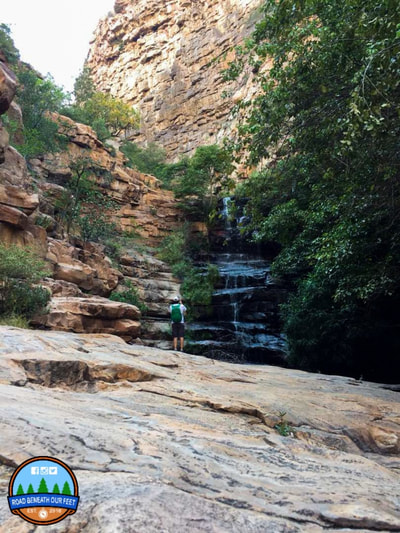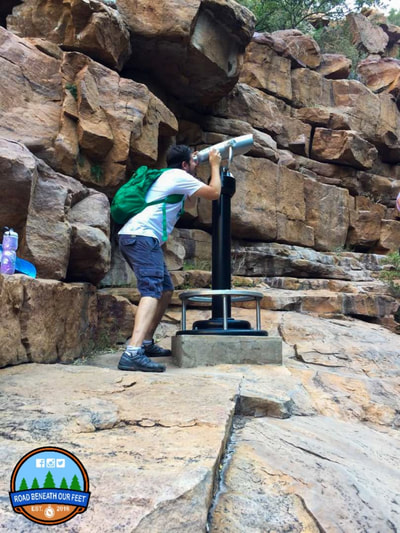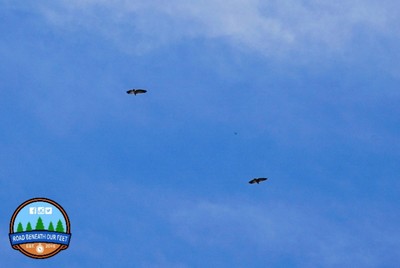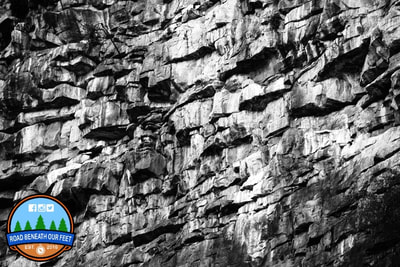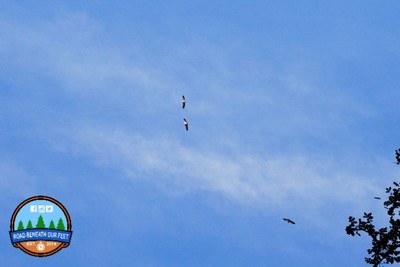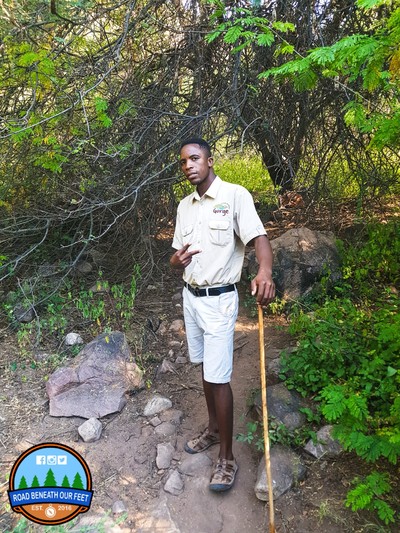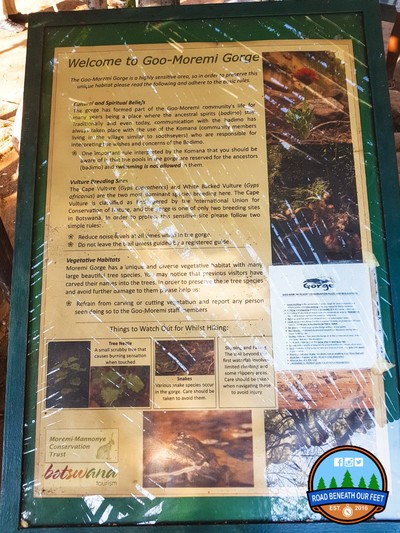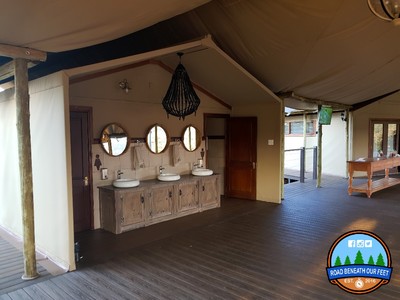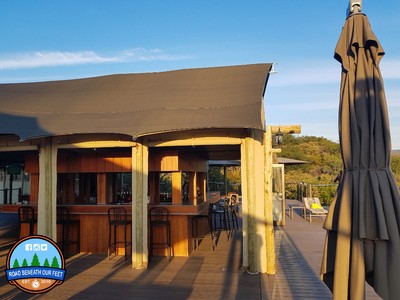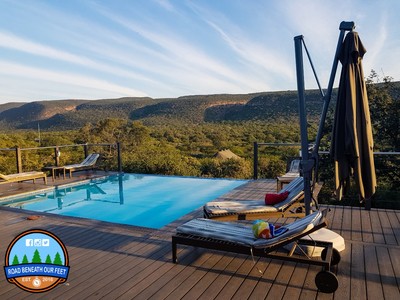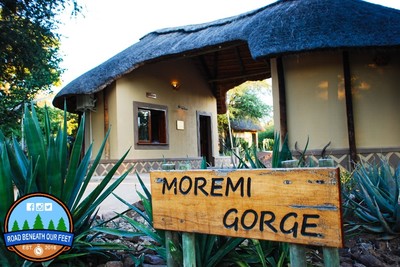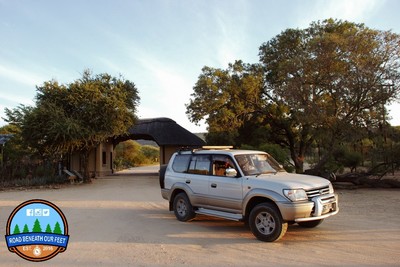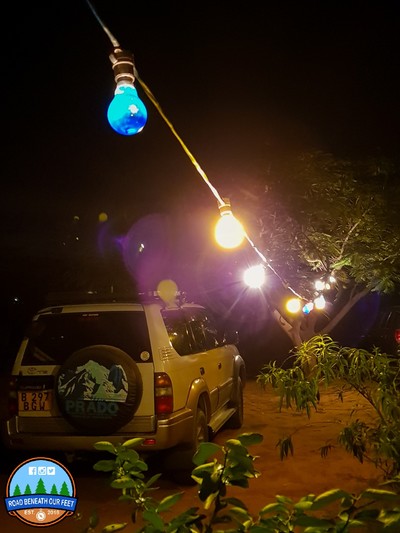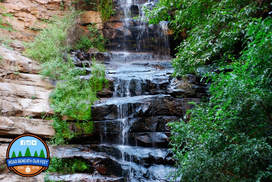 The small town of Palapye, located about 270km North East from Gaborone has a population of just over 30,000 and is known for being near the Khama Rhino Sanctuary and en route to the more popular tourist destinations in Botswana like Nata, Kasane and Maun. Yet this little gem of a town is home to some amazing landscapes and boasts a couple of fascinating gorges with crystal clear waterfalls and bubbling brooks! We have friends who live in Palapye and they invited us to visit them, with the promise that we would be amazed by the gorges around Palapye. We left Gaborone at around 7:30am on Sunday morning (as Monday was a public holiday) and arrived at their place at around 10am. After swapping our slippers and sandals for hiking shoes (highly recommended before you go to Moremi Gorge) and packing some snacks and water in a backpack, we headed out to find and see this amazing place. About an hour's drive from Palapye and through the little village of Moremi you will reach the hidden gem that is Moremi Gorge (or Goo-Moremi Gorge as it's properly referred to). Make sure you don't miss the rather small sign on your left, pointing right, to the Martin's Drift turn-off from the main A1 road, like we did, or you'll end up losing valuable time driving back to find the turn. At the village of Moremi you will leave the tarmac and continue for another 20 minutes on a decent gravel road, through the village, over a couple of small bridges until you reach the entrance and reception of Goo-Moremi Gorge. Here you pay your entrance fee (P60/$6 per person and P50/$5 per vehicle) and then make your way inside with your car for another 10-15 minutes on a sandy track to the actual foot of the gorge. It might take you less if you're not behind an overly slow Nissan March (or "washing machine on wheels" as my wife refers to them as), driven by a couple of young guys, listening to loud music and exchanging alcoholic beverages while driving. The track isn't that bad, but they did get stuck in one sandy patch and the passenger had to get out and give the washing machine a push to get them going again. But if you're driving a soft-roader, compact SUV or better, you'll be fine. At the foot of the gorge is a small parking for vehicles and a "meeting point" of sorts, with benches, covered by gum poles. There is also a massive Baobab tree here, a baboon skull and bones on display, an ablution block and trash cans. Here is where we joined other hikers and waited for our guide to meet us. The point is to hike from here up through the forest, crossing small brooks and streams along the way, to the waterfalls and eventually up to the large vulture colony at the very top of the gorge! Our guide explained that we will be going on the shorter, 1.5 hour hike to the view point and waterfall and that the longer hike up to the top lasts about 5 hours (there and back), but is only done on week days (and not on public holidays) and has to be booked a day in advance. Next to one of the trees is a pile of long, wooden walking sticks and we were told to select one as we would need them for the hike. After we had chosen our sticks, the guide led our group into the forest and our hike began. Once you enter the forest you will experience a fascinating change of scenery and we felt like we had walked into the Amazon rain forest! The surrounding vegetation is green, the trees are tall and the canopies above are thick and block out most of the harsh rays of the midday sun. As a result the temperature was considerably cooler and our caps, hats and sunscreen weren't really necessary (but do bring yours along if you are sensitive to even a little sun). The group the four of us were in was quite large (about 15 hikers in total) and this made for a rather rowdy bunch, mostly because the occupants of the washing machine were in our group and were constantly making loud and obnoxious remarks, falling over and talking incessantly, disregarding what our guide said about not making noise and being careful. We carried on however, enjoying the lush vegetation all around us and crossing a number of small streams as we hiked. The walking sticks do come in handy as you cross these rocky streams to help you keep your balance, but make sure you don't choose an overly long one like I did, as it will keep getting stuck in the low-hanging branches as you walk or have to crouch under some obstacles along the way. The path is rather rocky and slightly steep in some sections, so hiking shoes or at least a good pair of sneakers would be ideal to keep you from slipping. How the one lady in her bedroom slippers and the little girl in her flip-flops made it through, I have no idea! Make sure you wear a good pair of hiking shoes or sneakers and don't forget your walking stick. Our hiking mob soon came to a large boulder to the side of the hiking trail where we stopped for a short break. Our guide explained that this was known as the "Alarm Stone" and legend has it that the stone fell from the gorge above on the same night the first president of Botswana, Sir Seretse Khama passed away. Constant chattering from other members of the group, intrusive selfies and more obnoxious questions from the Washing Machine duo added to the awkwardness of hiking with such a large group and not being able to hear everything the guide was saying. We continued along until we came to a large stone face onto which we all clambered and paused again. We would leave our sticks here and continue without them as the next part of the hike would include some sections where we would have to hold on with both hands to make it through. The guide was explaining something else, but we heard nothing because of the loud chattering from within our group. We looked back and saw another group of hikers approaching us. This group had five guys in it and we asked their guide if he wouldn't mind if we joined them. He didn't mind and so we continued on in our new, much smaller and quieter group. The next section of the hike did involve some two-handed mountain-climbing to get us to the main waterfall. Ok, not serious mountain-climbing, but we did have to hold on with both hands to strong wire cables that were embedded into the rock face to descend and ascend certain parts, but again it was nothing too strenuous and our new guide, Zuma, was there to help at all times. Not much later, we came to a large pool of water with a small waterfall pouring into it and as we passed by it we came to a large plateau looking onto the main waterfall and the gorge above it. Here we met up with the other group and had a longer break to rest, have some water (you have to bring your own), admire the waterfall and try peer through the pedestal-mounted binoculars to spot any vultures or nests at the top of the gorge (we found it impossible to see anything because of the positioning of the binoculars and their sensitivity to the slightest movement). We did manage to see some vultures circling in the sky above us though. We spent about 20 minutes here, taking photos, chatting with Zuma, who explained that Moremi Gorge was home to one of the largest vulture colonies in Botswana with about 200 pairs of vultures. He also explained that vultures mate for life and if one partner dies, the other will not seek a new one, just like the Fish Eagles. It was during this break that our previous guide came to speak to us, the dissenters, about why we left his group. He understood our point of view and had scolded the Rowdy Duo but also explained that he has no control over who can or cannot go on a hike and that it should be the responsibility of the reception manager to disallow any drunk and/or noisy individuals to pay and join a hike. Not only will they disrupt the serenity of the hike and disturb other hikers, but they are putting themselves at risk of slipping, falling and hurting themselves along the way, as one of the young men did when he slipped on a rock face and crashed down onto his back. The guide apologised again and took his group back the way they came. The main waterfall and plateau in the middle of the magnificent gorge. After a few more photos and videos, we also made our way back down with our guide. The walk down is obviously easier, but one still needs to be careful when climbing over the rocks and crossing the streams along the way. Zuma was a walking fountain of knowledge, explaining which leaves are good for keeping away mosquitoes, how the roots of the sickle bush tree can be used to ease the effects of snake poison and made us laugh by listing Africa's "Ugly Five" and "Tiny Five" creatures and animals. It's no wonder that many TripAdvisor reviews online mentioned and praised him! After an exciting and scenic 2-hour hike, we finally came back to the meeting point at the foot of the gorge. We dropped our walking sticks, thanked Zuma and took a little break on the benches before leaving. Goo-Moremi Gorge is not only a hiking trail filled with waterfalls and vulture colonies, it is also a resort that boasts chalets and newly built tented accommodation, a campsite and a fully refurbished restaurant, bar and pool area as well. On our way back to the main gate, we decided to stop by the restaurant for a drink and were amazed at the location and the view of the gorge from there. Parking is a bit tight at the foot of the restaurant, but once you climb the stairs to the top and see the view, it's very much worth it! We sat in the warm afternoon sun on the deck by the bar, looking out onto the gorge, sipping drinks and relaxing after our energetic and tiring hike, exchanging comments and photos. As the sun began setting, we made our way back to Palapye, not wanting to drive in the dark.
RBOF RATING Visit the Goo-Moremi Gorge Facebook page to find out more about the gorge, the campsite and the chalets and how to book a hike or accommodation. Below is a gallery of some of our photos and videos from this trip. Feel free to post comments at the bottom of this page if you would like to visit and found this article and photos useful, or if you have visited Goo-Moremi Gorge feel free to share your experiences with us. DISCLAIMER *Road Beneath Our Feet and its founders have no affiliation with the mentioned game reserve/camp/lodge/hotel/accommodation provider. All comments are based on our personal experience and we aim to inform other travelers based on that experience and our point of view only.* Videos
Photo Gallery
0 Comments
Leave a Reply. |
Who is RBOF?
"We are a Botswana-based family of 3, with a passion for going out into nature and the bush any chance we get!" Categories
All
Archives
August 2022
|
